The Science and Art of Neandertal Teeth
The fossilized teeth of the Neandertals are scientifically informative--and pleasing to the eye
David Frayer
Source - http://www.scientificamerican.com/article.cfm?id=science-art-neandertal-teeth
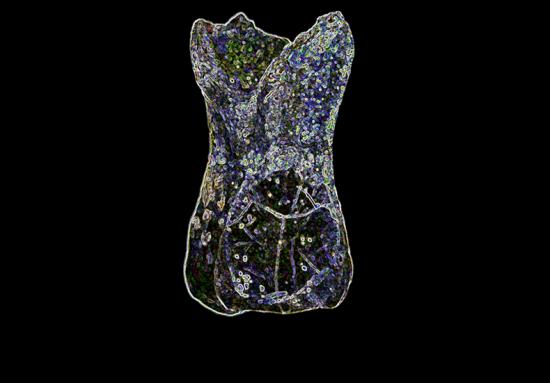
LINGUAL (TONGUE SIDE) VIEW of an upper right third molar, showing a large flake removed from the crown. © Luka Mjeda
Of all the human ancestors represented in the fossil record, Neandertals are the best known. A significant proportion of what scientists have learned about the Neandertals is based on a set of remains that the Croatian paleontologist Dragutin Gorjanović-Kramberger recovered between 1899 and 1905 from a rock shelter in the town of Krapina, some 60 kilometers north of Zagreb. The Krapina sample dates to between 120,000 and 130,000 years ago, during the Pleistocene epoch, and includes multiple representatives of nearly every bone and tooth of the body.
Early on, Gorjanović-Kramberger took an interest in the teeth from Krapina, noting anomalies such as taurodontism, in which the pulp chamber expands into the roots. First described from the Krapina remains, taurodontism turns out to be common in Neandertals, although not exclusive to them.
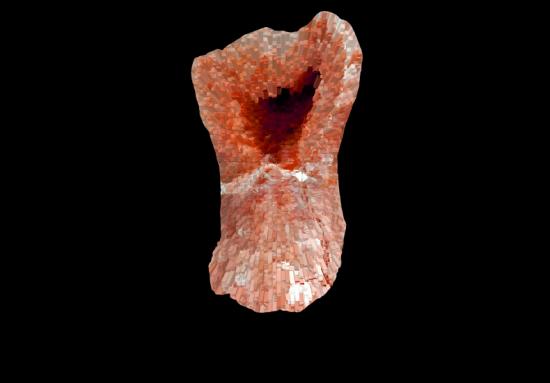
BUCCAL (CHEEK) VIEW of a lower right third molar (wisdom tooth) showing the broken open pulp chamber and the typical taurodontism in the Krapina Neandertals. © Luka Mjeda
Since Gorjanović's time, studies of the more than 275 Neandertal teeth from Krapina have yielded key insights into Neandertal life history. For example, analysis of enamel growth lines has shown that Neandertal wisdom teeth erupted earlier than those of modern humans, coming in at age 15 instead of 18 or older.
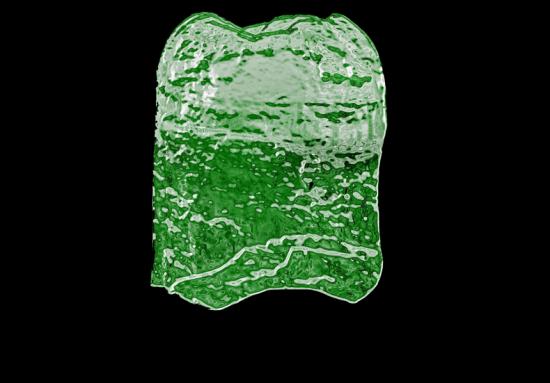 DISTAL (BACK) SIDE of a lower right second molar. The enlarged root is another example of taurodontism. © Luka Mjeda
DISTAL (BACK) SIDE of a lower right second molar. The enlarged root is another example of taurodontism. © Luka Mjeda
Other studies of tooth enamel document irregularities related to periods of metabolic stress from starvation and disease. That the Neandertals lived through the stress attests to a keen ability to cope with severe hardships. Aspects of the Krapina teeth, such as the shovel shape of the incisors, and surface features of the canines, bicuspids and molars, link the Neandertals to modern humans and Homo heidelbergensis, their ancestor in Europe. The overall size of the teeth of the adults Neandertals at Krapina, meanwhile, reveals differences between males and females similar to those seen in modern Homo sapiens men and women.
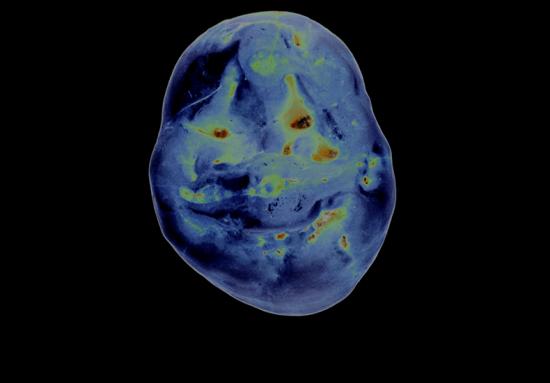
OCCLUSAL (CHEWING) SURFACE of an upper left second premolar (bicuspid). In the area of the ‘smile’ the tooth surface shows deformation due to growth abnormalities as the crown developed. © Luka Mjeda
Analyses of the Krapina teeth have also illuminated behavioral practices of the Neandertals. Grooves on the necks of some bicuspids and molars show that they used toothpicks to dislodge food stuck between these teeth. Studies of the wear patterns reveal that Neandertals wore down their front teeth more than their cheek teeth—indicating they used their incisors and canines as a third hand to grip and manipulate objects. Scratches left on the lip face of the same teeth provide further evidence for dental manipulations. Many of the incisors and canines from Krapina show numerous scratches on the front (lip-facing) surface—the result of tools raking across the teeth during life. The obliquity of these scratches, running from the upper left to lower right of the tooth, hints that Neandertals were predominantly right-handed.
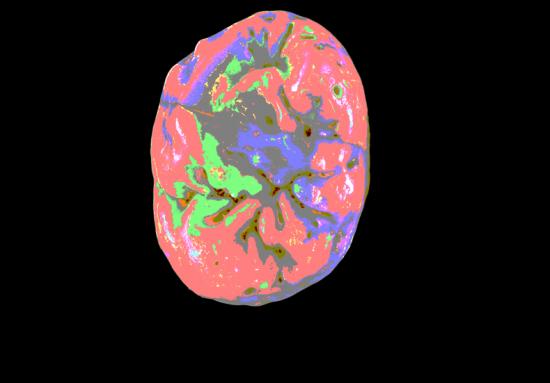
THE OCCLUSAL SURFACE of a lower right third molar from a young individual, based on the slight surface wear. © Luka Mjeda
Gorjanović was the first to look at Neandertal teeth in new ways by publishing a series of radiographic images in 1902, just seven years after Wilhelm Röntgen's discovery of x-rays. Recently, Zagreb-based artist Luka Mjeda photographed all the original teeth for a permanent record as part of an open-source platform for information about Pleistocene humans called the NESPOS project (www.nespos.org). Jakov Radovčić of the Croatian Natural History Museum in Zagreb led the Krapina part of the project.
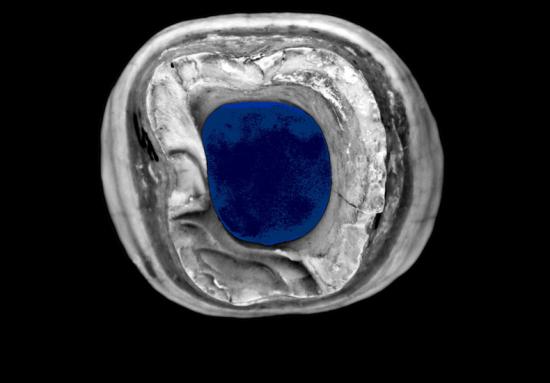
LOOKING INTO the enlarged pulp chamber of the broken root of a lower left second molar. © Luka Mjeda
Mjeda later manipulated the photographs to create remarkable, artistic renderings of the tooth surfaces. Although Gorjanović probably never considered the aesthetics of the Krapina teeth, we think he would have appreciated this new view of them through the eyes of an artist. Mjeda and I recently mounted an exhibition of the images in Lawrence, Kansas. They are available for purchase from TeethasArt@gmail.com